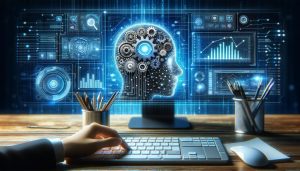Using artificial intelligence to generate a robot skeleton sketch in the style of the Vitruvian Man by Leonardo da Vinci is an ambitious project. By employing deep neural networks, computer vision, and generative models, a realistic vision of what a robotic skeleton in the style of da Vinci’s iconic artwork could look like can be created.
First, a deep neural network would be trained on a dataset of existing robot skeletons. This would enable the computer to learn the features of robot skeletons and identify the key components of a robot skeleton. Then, an image generation system would be used to generate a robotic skeleton sketch in the style of the Vitruvian Man. This system would use generative models to create a 3D model of the robotic skeleton and then use computer vision to apply the relevant textures, colors, and shapes that would give the sketch the same look and feel of the original Vitruvian Man.
Finally, the generated image would be tested for accuracy and improved, if needed. This would involve evaluating the image for the accuracy of its proportions and its replication of the original artwork. This could involve adding details such as the facial features of the Vitruvian Man or adjusting the colors and textures to better match the original artwork.
Once the image is perfected, it would be ready to be used as a reference for robotic skeleton design. By combining the power of deep neural networks, computer vision, and generative models, a realistic robotic skeleton sketch in the style of the Vitruvian Man by Leonardo da Vinci can be created.














